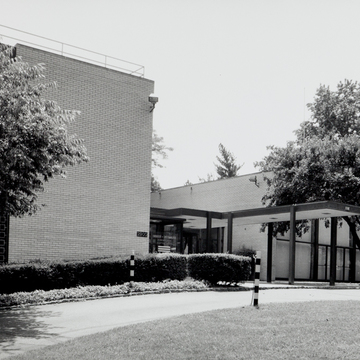By the late 1950s the Swiss-born and -trained architect William Lescaze (1896–1969), one of the earliest practitioners of European modernism in America, was beginning to be influenced by the movement's later phases, notably the regular linear facade patterns created by exposed skeletal structures promoted by Mies van der Rohe. Miesian elements at the low and sprawling Swiss Embassy complex are still embryonic. Its cubic massing, planar wall treatment, and organization into a series of blank or unfenestrated walls set against glass ones are all so beautifully proportioned and detailed that the modern buildings fit comfortably into a residential neighborhood dominated by 1930s and 1940s historicist architecture.
You are here
Embassy and Chancery of Switzerland
If SAH Archipedia has been useful to you, please consider supporting it.
SAH Archipedia tells the story of the United States through its buildings, landscapes, and cities. This freely available resource empowers the public with authoritative knowledge that deepens their understanding and appreciation of the built environment. But the Society of Architectural Historians, which created SAH Archipedia with University of Virginia Press, needs your support to maintain the high-caliber research, writing, photography, cartography, editing, design, and programming that make SAH Archipedia a trusted online resource available to all who value the history of place, heritage tourism, and learning.






